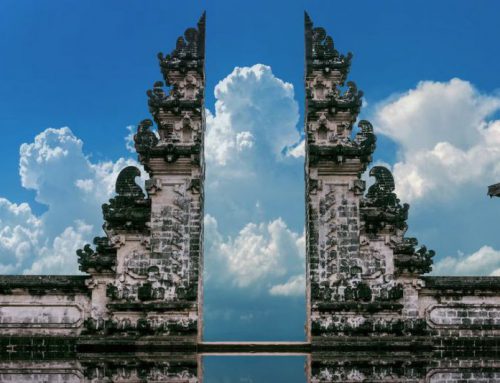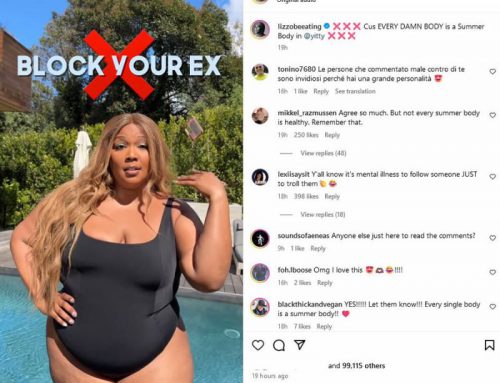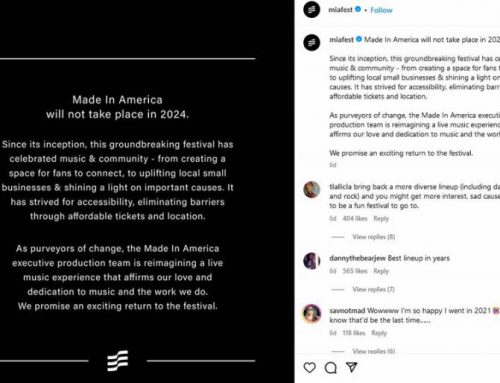One thing omitted from the narrative of this barely there celebrity about her being uprooted from one side of her family and dragged to the west coast at such a young age, is the reason.
Her dad was up to his ears in the BCCI scandal, had a bunch of investors who wanted his head, but cut a deal with the prosecutor, who later became the FBI director.
Her dad was narcing on those family members she wanted to be with, to the government.
Bella Hadid
Mohamed Hadid
Bella Hadid Missed Growing Up in ‘Muslim Culture’ After Being ‘Extracted’ From Palestinian Family
In a recent interview with GQ, the 25-year-old model — who is the daughter of Palestinian real estate developer, Mohamed Hadid, and Dutch model, Yolanda Hadid, — recalled being “extracted” from the Palestinian side of her family when she was 4, and expressed her sadness over growing up without that “missing” part of herself.
While she was born in Washington D.C., where she was surrounded by her Palestinian family members, Bella, her siblings and her mother moved to Santa Barbara, California following her parents’ divorce in 2000.
“I was with my Palestinian side [of the family in D.C.],” the young star told GQ. “And I got extracted when we moved to California.”
Bella opened up about her upbringing in Santa Barbara, away from her Palestinian and Muslim roots, sharing that she was often the only Arab girl in her class and was called racist names when she was a teenager.
“I was never able to see myself in anything else, so I tried to just sit back,” she said. “For so long I was missing that part of me, and it made me really, really sad and lonely.”
“I would have loved to grow up and be with my dad every day and studying and really being able to practice, just in general being able to live in a Muslim culture,” she added. “But I wasn’t given that.” – Source
BCCI SCANDAL: BEHIND THE ‘BANK OF CROOKS AND CRIMINALS’
By Steven Mufson and Jim McGee
July 28, 1991More than 12 years ago, a major U.S. bank decided not to do any business with a Luxembourg-based institution called the Bank of Credit and Commerce International.
One of the American executives recalls that something about BCCI just didn’t add up. “They were reluctant to provide information about the sources and uses of funds,” he said last week. “We got bad vibes from them … so we just put them on our internal blacklist.”
A lot of other people got bad vibes from BCCI, and among bankers it acquired the nickname of “Bank of Crooks and Criminals.” But it took a dozen years for regulators overseeing BCCI’s far-flung empire in Britain, Luxembourg, the Cayman Islands and elsewhere to reach the same conclusion.
In the interim, BCCI wove what its auditors, Price Waterhouse, belatedly discovered and now describe as “probably one of the most complex deceptions in banking history.”
BCCI made phony loans, concealed deposits, hid huge losses, and was the bank for a host of shady customers ranging from terrorists and spies to drug runners and dictators.
The unmasking of the bank has provoked a slew of questions about how a financial scandal of such magnitude was covered up for so long while 1.2 million depositors, most of them from Third World countries, entrusted their money to BCCI. Where were the regulators? What blinded the auditors? To what extent were various intelligence agencies, including the CIA, involved? What were BCCI’s links to drug kings and dictators?
According to British authorities, BCCI committed fraud on a grand scale: keeping separate books for a “bank within the bank” that handled illegal transactions, making a $32 million payoff to silence one of its own managers, using clients’ accounts to hide its own losses, and shuffling money among different affiliates to disguise the bank’s true financial condition.
One of the pieces of the scheme was Washington-based First American Bankshares Inc. For a fee, prominent Middle Eastern individuals served as fronts for BCCI in gaining control of the Washington bank in 1981. These illegally held shares in First American were then used as collateral a second time by BCCI to raise about $600 million in new loans, said a source investigating the affair for British authorities. BCCI used that money to cover up losses elsewhere, he said.
On July 5, the Bank of England exhausted efforts to clean up the bank and shut its doors, alleging the fraud was so “massive” that BCCI could not be reformed. “The culture of the bank is criminal,” said Robin Leigh-Pemberton, a governor of the Bank of England.
Among the unsolved mysteries: Where did the estimated $5 billion hole in the bank’s balance sheet go? Even now, it remains unclear whether BCCI executives stole money to enrich themselves or if they simply tried to keep a crumbling enterprise together by any means.
“It’s not clear that the money has gone anywhere at all except to losses and dodgy loans,” said one person investigating BCCI for British authorities. “We haven’t established that anyone stashed a pot of money elsewhere… . The end might have been to keep a bank going when it never made a profit so that its officers could continue to be very important people of great status.”
BCCI was founded in 1972 by Pakistani banker Agha Hasan Abedi, who had previously been president of the United Bank Ltd. of Pakistan. Bank of America initially had a 25 percent interest; Sheik Zayed bin Sultan al-Nahyan, ruler of Abu Dhabi, and other wealthy individuals from the Persian Gulf also had interests.
A former Pakistani finance minister calls Abedi a “man of tremendous intellect,” committed to economic development in the Third World and interested in Sufiism, Islamic mysticism. A former customer said Abedi spoke in a low monotonous tone and that his hair stood up as if he had forgotten to brush it after getting out of bed. He occasionally interrupted business talks to discuss social values. – Source
Read more on these Tags: Bella Hadid, Mohamed Hadid









